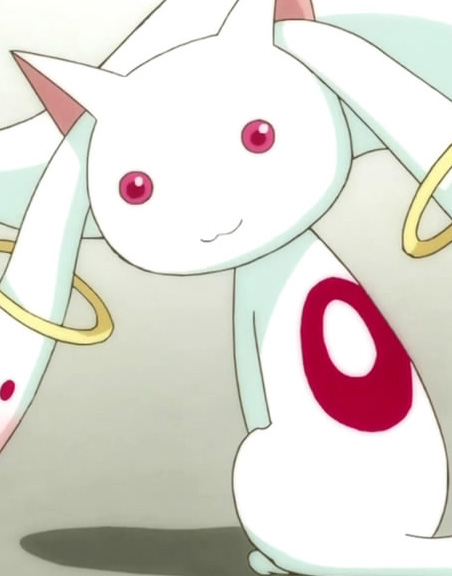
Just like in the West, people in pre-modern Japan often explained phenomena like illness, floods and other misfortunes with evil spirits. In Japan’s case, these evil spirits were thought to take the shape of animals: dogs, badgers, and especially foxes. These tsukimono (憑き物, “possessing beings”) took possession of people in their search for food or other creature comforts. When they did so, bad luck, illness, and other misfortunes befell the possessed and those around them.

Witch and tsukimono on an old card game.
Alternatively, some people weren’t possessed by tsukimono but kept them as pets or familiars. It is these people who are considered witches. Having tsukimono was usually a family affair. Families who owned tsukimono were known as tsukimono-suji (憑き物筋) or tsukimono-zukai (憑 き物使い). In these cases, the tsukimono could have a beneficial impact on their handlers, bringing wealth and prosperity. And on the flip side, they were thought to bring illness and bad luck to anyone the owners dislike. This resulted in the families being feared and respected, but also ostracized.
People were hesitant to do business with such a family, and they had trouble selling property. In addition, the tsukimono were inheritable through the female line, making it nearly impossible for these women to find husbands. Tsukimono could not be disinherited or disowned, but one could attempt exorcisms with a Shinto priest, female medium or other spirit specialists. In Tohoku and Kyushu prefectures, religious practitioners and not families were thought to wield tsukimono. So these people could not only cure you of tsukimono possession but curse you with it, too.

Tsukimono and their masters.
Often these tsukimono-suji were simply wealthier than their neighbors. When jealous tongues started wagging and the rumors stuck, the family would be marked forever. As in Europe and America, being accused of this sort of witchcraft had a negative impact on the families’ lives. Nevertheless, belief in these tsukimono was widespread. Cases of spirit possession as late as 1997 have been recorded.
In Japan, witchcraft wasn’t exclusive to women, although it’s interesting to note that the tsukimono are passed down generation to generation through the female line. This seems to affirm a widespread global belief that women are more capable of – and likely to be involved in – witchcraft.
Perhaps predictably, cats also feature in Japanese witch stories. Hundreds of years ago, it was a common belief that girls who visited a temple after the sun went down risked being targeted by a witch. The witch, disguised as a kindly old woman, would lure the girl to her house with the promise of a warm bed for the night. Once inside, the witch would resume her ordinary, frightening form and promptly devour the girl. And because cats often hung around temples, it was believed that they were witches in disguise, waiting for their next victim.

A cat witch as they appear at temples.
Today, a witch can be good or evil, and not always as self-serving as our ancestors believed. Japan’s magical girls have come a long way from their spirit-wielding roots and are hardly seen as evildoers but rather as guardians and protectors. Looking at certain prominent anime and manga that feature magical girls, one will notice that there’s always some sort of familiar either bestowing the magical gift upon the protagonists or, at least, helping out with it.
Luna from Pretty Guardian Sailor moon is an excellent example for a pop culture tsukimono. It is the cat who gives the Sailor Senshi their powers in the form of brooches, scepters, and other magical items. While the girls come into their own as the story progresses and learn to wield their powers by themselves, the initial source was Luna, their familiar.


A not-so-friendly example is, of course, the notorious Kyubei from Puella Magi Madoka Magica. With promises of wish-fulfillment, this creature also fits the description of a tsukimono that is the source of magical powers – without Kyubei, magical girls wouldn’t exist.
Examples of Japanese witchcraft are manifold, whether they’re found in legends of old or on the afternoon’s TV program. Don’t be fooled into believing that witchcraft is generally a source of evil and wickedness – it all depends on how the witches and wizards choose to use their powers.
Source: http://japanistas.com/en/archives/65500






 Chiedi maggiori informazioni su come prenotare un consulto tarologico privato con Luce.
Chiedi maggiori informazioni su come prenotare un consulto tarologico privato con Luce.